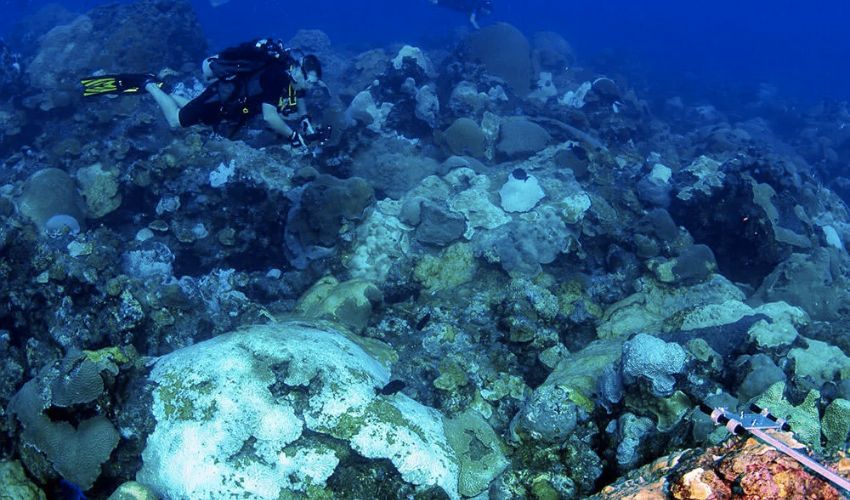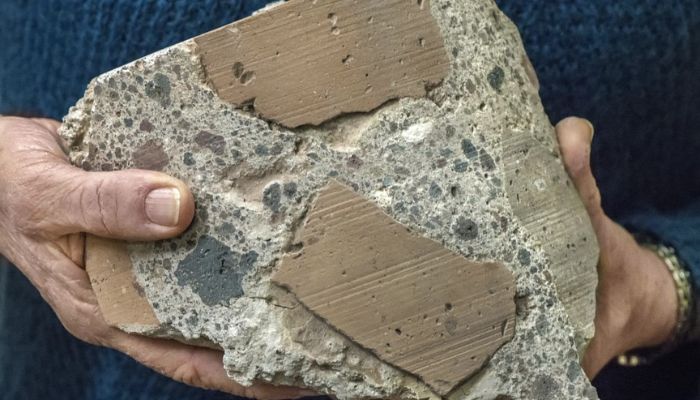Ancient Roman Concrete Meets Modern 3D Printing to Save Coral Reefs

The underwater coral reefs of the world are some of our Earth’s most diverse and fascinating, living, breathing ecosystems. Unfortunately due to pollution, climate change and other negative factors, coral reefs are in extreme danger of extinction, with 90% of Earth’s coral projected to die out by 2050. However, efforts have been underway around the world to provide the world’s oceans with 3D printed coral reefs which may be able to keep the reef biodiversity safe and intact. Over the past several years, many fascinating technologies have emerged from growing natural coral from 3D printed structures to fish preservation, with a variety of materials and 3D printing technologies. Now a multidisciplinary team from the University of Texas at Arlington is starting their own efforts at coral preservation in the Gulf of Mexico using a familiar concept with ancient roots.
The problem with some previous efforts at artificial reef creation is the materials that are used to create a safe area for ocean wildlife to thrive. In the early years of this process, many different types of objects were used, from decommissioned ships and scrap metal to rubber tires and concrete blocks. Unfortunately, with the endless shifting of the currents and the effect of time and underwater wear and tear, many of these materials could risk breaking apart or even further polluting the environment they are meant to preserve. However, the UTA Team led by Warda Ashraf, associate professor in the Department of Civil Engineering wants to use a 3D printing material similar to the concrete of ancient Rome to repair, restore and rebuild coral reefs.

Roman concrete (Photo credits: Roy Kaltschmidt, Berkeley Lab)
Roman concrete is similar enough in appearance to our modern construction material but differs in a number of key ways that cause the ancient construction material to be much stronger and more durable than its modern counterpart. It is mixed with a variation of different rocks and large pieces of stone or rubble, while volcanic dust or ash was often used as a binding cement. The use of these ingredients would cause reactions when mixed with seawater, for example, causing the substance to be more resistant to cracks and breaks. Indeed, the concrete mix continues to harden and strengthen for years or even decades after construction, leading to the mixture being dubbed “the most durable building material in human history”, further evidenced by the ancient structures such as the Pantheon in Rome, made of Roman concrete and still standing after nearly two thousand years.
It is the underwater characteristics of the concrete that interest Ashraf and her team, as the saltwater-resistant material could prove to be a very long-lasting solution and is less of a risk for environmental pollution when compared to modern concrete or other solutions. The team has already 3D printed several small pieces of Roman concrete for testing underwater in Baffin Bay, a small inlet off of the Gulf of Mexico, south of Corpus Christi, Texas. According to Ashraf, the tests have been a great success, “Barnacles that have attached themselves to the new reef really grab hold of it. The materials also got 40% to 50% stronger in seawater within five months.”
The concrete carries an added bonus; real coral is able to capture carbon dioxide which it uses to build its skeleton, playing a vital role in our environment and the Roman concrete coral plans to do something similar. “We will modify the concrete recipe to store carbon and offer a novel pathway to permanently sequester thousand tons of carbon under the ocean in addition to providing coastal resilience and supporting marine habitat,” Explained Ashraf. With a team of professionals and a $2 million grant from the National Science Foundation, the team hopes to make an impact on preserving marine biodiversity around the world. Learn more about the project HERE.

The team is led by Warda Ashraf, associate professor at the Department of Civil Engineering (Photo credits: University of Texas at Arlington)
What do you think of the Roman concrete reefs? Let us know in a comment below or on our LinkedIn, Facebook, and Twitter pages! Don’t forget to sign up for our free weekly Newsletter here, the latest 3D printing news straight to your inbox! You can also find all our videos on our YouTube channel.
Cover photo credits: NOAA






